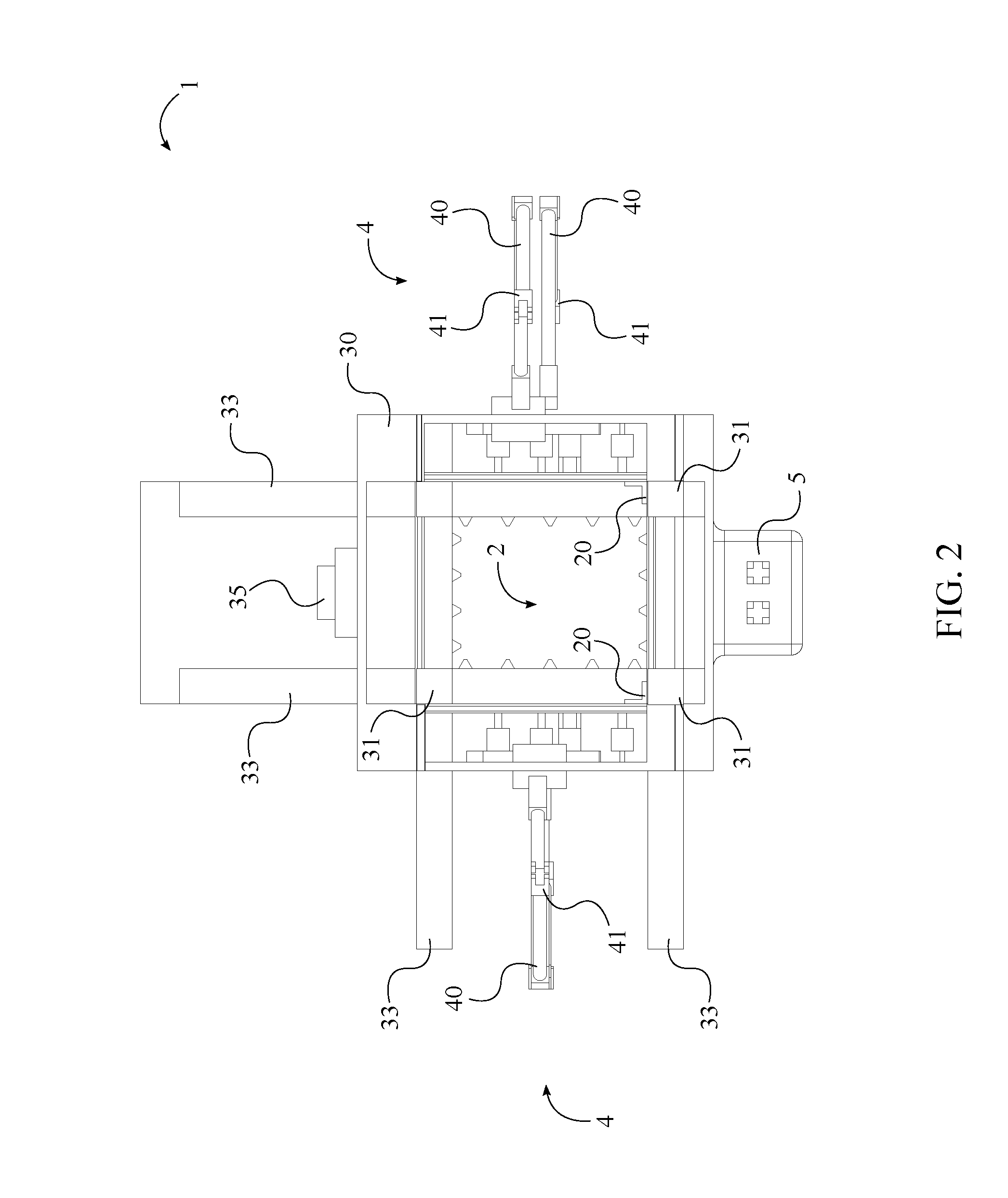Gateway Segment Assembly Line
a technology for assembly lines and gates, which is applied in the field of system and method for constructing large structures in space, can solve the problems of large fabricated modules, inconvenient assembly, and inability to maximize cargo space, and the current method of space structure construction, such as the international space station, can not meet the needs of large-scale production and transportation,
- Summary
- Abstract
- Description
- Claims
- Application Information
AI Technical Summary
Benefits of technology
Problems solved by technology
Method used
Image
Examples
Embodiment Construction
[0015]All illustrations of the drawings are for the purpose of describing selected versions of the present invention and are not intended to limit the scope of the present invention.
[0016]The present invention is a gateway segment assembly line (GSAL) that allows for the construction of space stations and other structures while in orbit. The GSAL is designed to be an unmanned system that receives materials from a transport spacecraft and manufacturing instructions from a remotely situated base station. Using the provided materials and the manufacturing instructions, the GSAL constructs a segment; the segment being a single section of a more complex and larger space station or structure. Upon construction of the segment by the GSAL, the segment is guided to an orbital construction site where the segment is merged with previously constructed segments. The GSAL then continues to produce segments as instructed in order to complete the construction of the structure.
[0017]The present inve...
PUM
 Login to View More
Login to View More Abstract
Description
Claims
Application Information
 Login to View More
Login to View More - R&D
- Intellectual Property
- Life Sciences
- Materials
- Tech Scout
- Unparalleled Data Quality
- Higher Quality Content
- 60% Fewer Hallucinations
Browse by: Latest US Patents, China's latest patents, Technical Efficacy Thesaurus, Application Domain, Technology Topic, Popular Technical Reports.
© 2025 PatSnap. All rights reserved.Legal|Privacy policy|Modern Slavery Act Transparency Statement|Sitemap|About US| Contact US: help@patsnap.com



